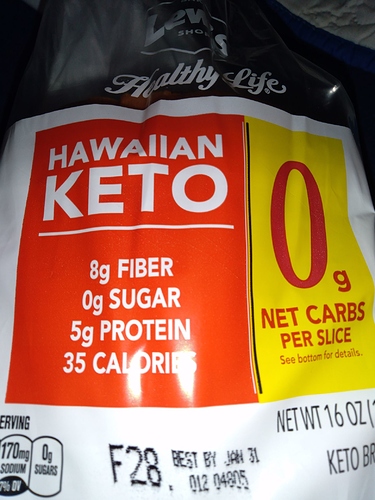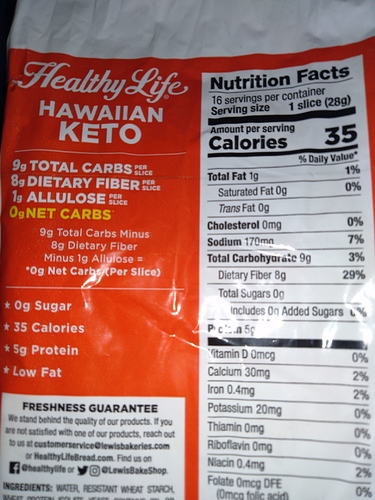There are two relevant issues here, actually. The first is what your carb tolerance is. We recommend eating no more than 20 g/day of carbohydrate, because that works for everyone who is not severely insulin-resistant. Once you are fat-adapted, you can then experiment to see if you can tolerate a higher level of carb intake.
The second issue is fibre. The concept of net carb intake is built on this, the notion that we don’t have to count the fibre that is part of the carbohydrate content of the food, because fibre is by definition indigestible. So the problem is that fibre doesn’t cancel out digestible carbohydrate. The only way you can have a zero-carb food is that either all the carbohydrate it contains is fibre, or else it contains no carbohydrate at all. Adding fibre to a food does not cancel out the digestible carbohydrate it contains, because the equation runs like this: total carb = digestible + fibre + added fibre; and net carb = total carb - (fibre + added fibre). So the digestible carbohydrate is always an irreducible minimum.
If you are subtracting the “fibre” amount on the nutrition label from the “carbohydrate” amount and getting either 0 or a negative number, you live outside North America. That means that the “carbohydrate” amount on the label is already the net carb amount, with the fibre already subtracted. And to get your total carb intake, you need to add “carbohydrate” to “fibre” to get the total.
In North America (U.S. and Canada, primarily; I don’t know the laws in Mexico), the “carbohydrate” number is total carbohydrate, so if you want to count net, you can subtract the “fibre” amount from it. But it will almost never equal zero.
I’m sorry I didn’t catch on when reading your original post. But unless you live in the U.S. or Canada, you may be calculating your carb intake improperly.

 It’s still not zero, why would it be good for? (But each to their own.)
It’s still not zero, why would it be good for? (But each to their own.)


 (i couldnt find the tongue in cheek emoji)
(i couldnt find the tongue in cheek emoji)

